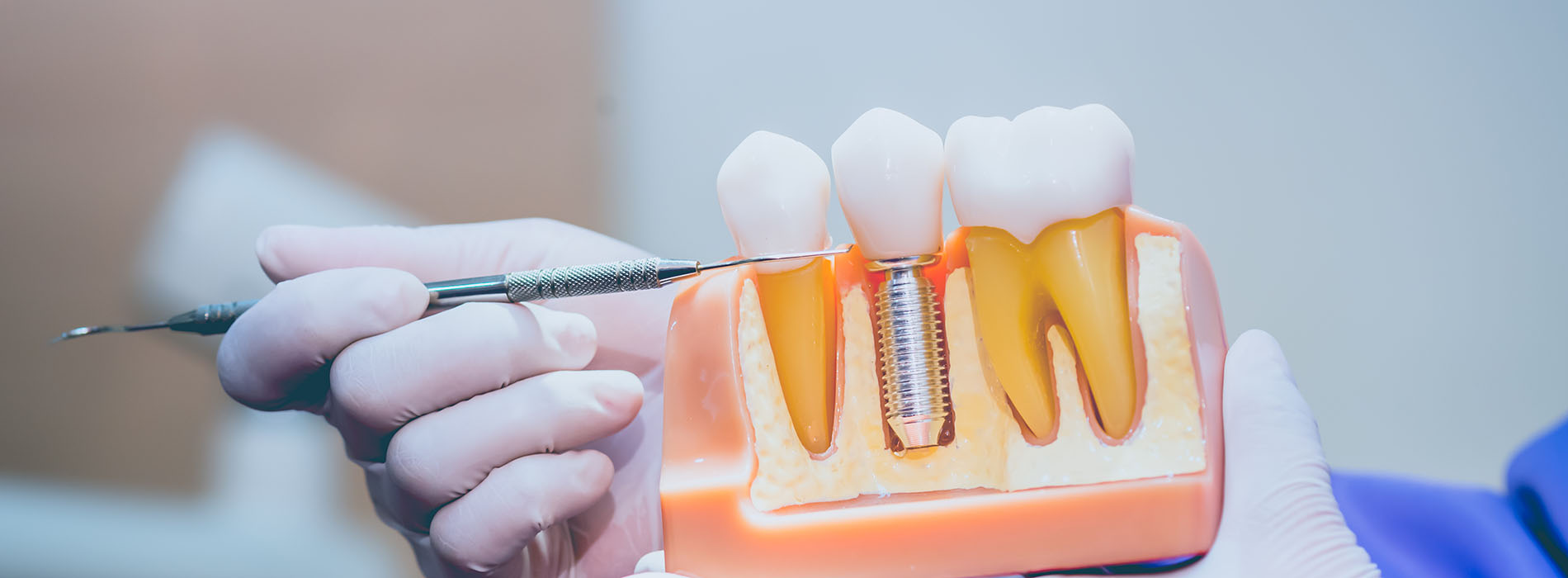New Patients
Existing Patients


Losing one or more teeth affects more than the way you look — it changes how you bite, chew, and speak. Implant restorations recreate the visible portion of a tooth or a series of teeth and attach to dental implants that act like artificial roots. By recreating both the foundation and the crown, these restorations deliver a stable, natural-feeling solution that helps preserve surrounding teeth and jawbone structure.
Unlike removable options, implant restorations are designed to remain in place as part of your oral system. They can restore chewing comfort and speech confidence while blending with the appearance of your natural teeth. Because they attach to implants that are anchored into the jaw, implant restorations reduce the movement and slippage associated with traditional dentures.
Choosing an implant restoration is a long-term approach to tooth replacement. When planned and executed carefully, these restorations integrate with your mouth’s anatomy and daily habits, giving you a dependable way to rebuild a complete smile without compromising nearby teeth.
Implant restorations are created after the implant itself has integrated with the jawbone, a process called osseointegration. Once your implant is stable, the restorative phase begins: the team will document the implant’s position using digital scans or impressions so that the replacement tooth or teeth fit precisely. Accurate records are essential for matching bite, spacing, and the way your lips and cheeks frame your smile.
From those scans, a dental laboratory or in-office milling system fabricates the crowns, bridges, or overdenture components that will attach to the implant. The design accounts for color, translucency, and surface texture so the restoration blends with your existing dentition. In some cases a custom abutment — the connection piece between the implant and the visible restoration — is used to achieve the best aesthetic and functional outcome.
Before final placement you may receive a temporary restoration to protect the implant site and maintain appearance while the permanent piece is completed. When the final restoration arrives, we verify fit, occlusion (how your teeth meet), and comfort before securing it, ensuring it performs naturally within your bite.
Implant restorations are not one-size-fits-all. A single implant can support an individual crown, restoring the look and function of a lost tooth. When several adjacent teeth are missing, implant-supported bridges span the gap without relying on neighboring natural teeth for support. For patients missing many or all teeth in an arch, implant-retained dentures or fixed full-arch restorations provide increased stability and improved chewing efficiency compared with traditional dentures.
Material choices also vary: all-ceramic crowns and zirconia structures are favored for their lifelike appearance and biocompatibility, while other materials may be selected for specific strength requirements. Your clinician will discuss the advantages of each approach, considering factors like location in the mouth, aesthetic goals, and the health of the underlying implant and surrounding tissues.
Specialized solutions such as angled abutments or multi-implant frameworks allow clinicians to restore challenging cases while minimizing additional surgery. The goal is always a restoration that looks natural, feels comfortable, and fits securely so you can return to everyday activities with confidence.
The timeline for implant restoration depends on biological healing and the treatment plan. After implant placement, a healing period allows the implant to bond with bone; once this integration is sufficient, the restorative process can begin. During this time, patients often use temporary restorations to preserve appearance and function while the definitive restoration is fabricated.
Placing the final restoration is typically an outpatient appointment that includes trial fitting, adjustments for bite and comfort, and final attachment. The procedure itself is generally straightforward, but careful attention during this visit ensures that the restoration aligns with your smile and meets functional demands. Follow-up visits let us confirm that healing is progressing well and that the restoration remains stable.
After the restoration is in place, most patients return to usual activities quickly. Short-term soreness or sensitivity around the site can occur but usually resolves as tissues adapt. We’ll provide clear care instructions and schedule maintenance checks to protect the long-term health of your implant and restoration.
Success with implant restorations relies on routine care and regular professional oversight. Daily oral hygiene — brushing with a soft-bristled brush and cleaning around the restoration with interdental aids as recommended — helps prevent plaque buildup and protects the gum and bone supporting the implant. These practices are similar to caring for natural teeth, but attention to the implant interface is especially important.
Regular dental examinations and professional cleanings allow your clinician to monitor the restoration, check for signs of wear or loosening, and address any early issues before they progress. If you grind your teeth or have other parafunctional habits, we may recommend a protective appliance to reduce stress on the restoration and underlying implant.
Maintaining a healthy lifestyle and avoiding habits that place undue force on the restoration — such as chewing on hard objects — will also extend the functional life of the work. With consistent home care and periodic professional checkups, many patients enjoy stable, long-lasting results from their implant-supported restorations.
At Joanna Tricorache, DDS, we approach implant restorations with careful planning and attention to detail so each restoration supports your oral health and personal goals. If you’re considering implant-based tooth replacement or want to learn whether an implant restoration is right for you, please contact us for more information.

Ready to schedule your next dental appointment or have questions about our services?
Contacting Joanna Tricorache, DDS is easy! Our friendly staff is available to assist you with scheduling appointments, answering inquiries about treatment options, and addressing any concerns you may have. Whether you prefer to give us a call, send us an email, or fill out our convenient online contact form, we're here to help. Don't wait to take the first step towards achieving the smile of your dreams – reach out to us today and discover the difference personalized dental care can make.